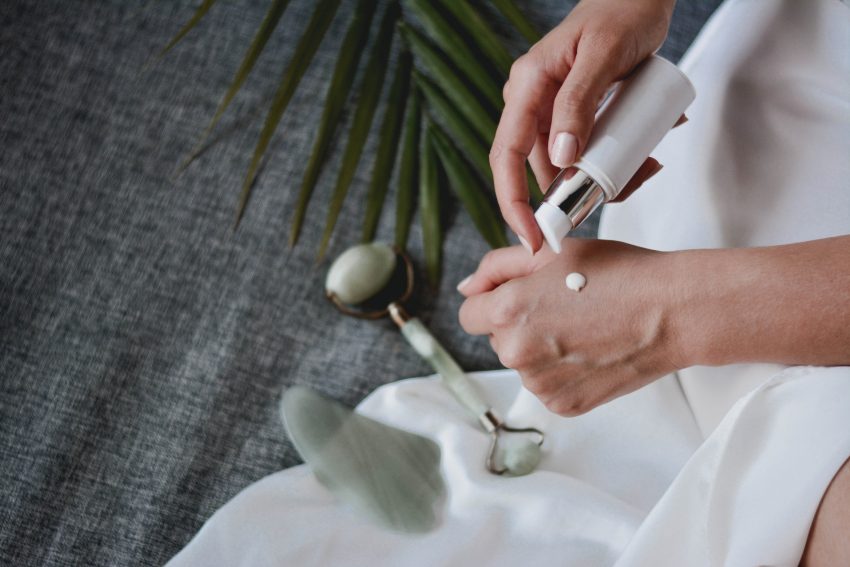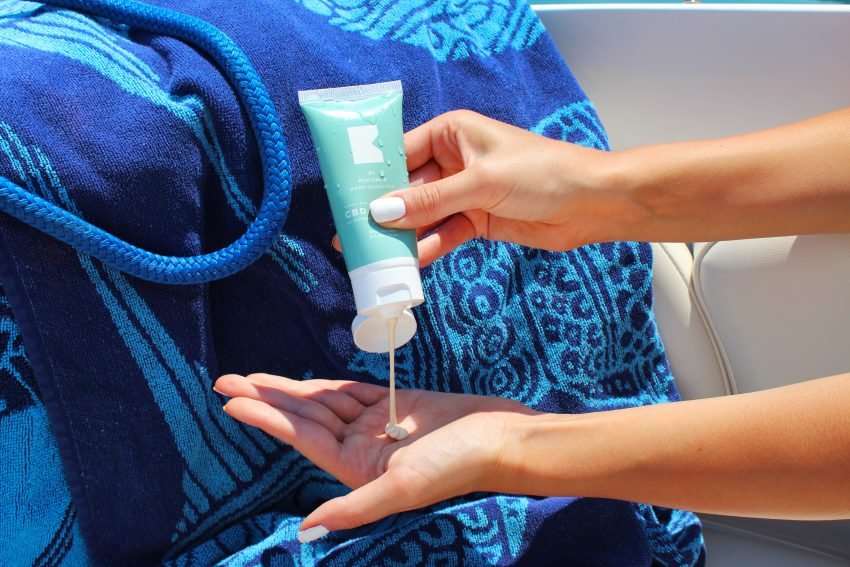Changes in our skin as we age are inevitable, including loss of moisture, changes in…

Top Tips to Make Sure You’re Choosing the Right SPF
Since a light at the end of the tunnel was announced in the UK recently, many of us have begun to plan ahead for what life might look like once we’re allowed to go out and socialise again.
With more outdoor time on the horizon, we’re thinking (as is often the case) about our skin and what we can do to protect it as the warmer months approach, and we consider the elements and our skin. The most important skin care tip you’re likely to receive is to make sure you wear SPF, and that goes for every day, whether or not you’re outdoors.
Understandably, this fell by the wayside a little in 2020, but spring has sprung and summer is on the way, so here’s our guide to understanding and choosing the right SPF for you.
The Basics
Dialling it back to the beginning, choosing the right SPF means understanding the options, and understanding exactly what an SPF is.
SPF is an acronym for sun protection factor, and it’s a measure of how long (not how well) a sunscreen can protect you from the sun. That means the higher the SPF, the more protection that sunscreen will provide.
That means that the real difference between SPF 15 (which should be your minimum, despite what’s available to buy) and SPF 50, is how often you need to reapply them.
How are sunscreens different?
It might surprise you to hear that there are actually two types of sunscreen: physical sunscreen and chemical sunscreen.
The difference is simple, and quite intuitive once you’ve got the hang of it. Physical sunscreens sit on the surface of your skin, and work by reflecting UVA and UVB rays away from your skin. These are instantly effective after application.
Chemical sunscreens work differently by absorbing into your skin and converting UV rays into heat to get rid of them. They’re usually lighter in texture than physical sunscreens, but they take longer to be absorbed. However, it’s far easier to apply other products over chemical sunscreens, such as moisturiser or make-up.
So which SPF is best for my skin type?
As we’ve previously discussed, we all have different types of skin, and knowing your skin type is the best way to know which SPF will work best for you.
Once you’ve found out your skin type, whether it’s normal, oily, dry or a combination, then you can start to consider your SPF needs and preferences. However, if your skin is prone to acne, or more mature, your needs can grow more complex. Don’t worry though, we’ve got you covered.
Normal Skin
For the lucky ones out there with normal skin, it’s as simple as can be. Every type of SPF is suitable, all you need to do is decide on the strength of your SPF.
For those fortunate enough to have normal skin, every SPF should be suitable to use. SPF 15 will probably be suitable most of the time, though it depends on how long you spend outdoors and what the weather is like. The more time spent in the sun, the higher your SPF needs to be.
And of course, a chemical sunscreen is easier to use every day, particularly if you’re using other products on your skin.
Oily Skin
If your skin is oily, the chances are you already know about it. If you’re not using the right products, it can be hard to defeat the midday shine. Which is why using a physical sunscreen in addition to everything else isn’t a good idea.
In fact, it can make your face appear oilier, and be an uncomfortable extra layer on your skin. Which is why we recommend opting for a chemical sunscreen. This will ensure your skin stays matte and shine-free whilst staying protected from the rays of the sun.
However, if you’re in the habit of regularly clearing the oil from your skin throughout the day, remember that you’ll need to reapply your sunscreen each time you do!
Dry Skin
For those with dry skin, you may already be more prone to burning, which makes protecting yourself from the sun even more important.
When skin burns or tans, it loses moisture and grows even drier. Which is why we sometimes find ourselves with peeling, red skin that quickly gets sore. If your skin is already dry, this can be a tricky situation to handle, so we’d recommend choosing a moisturising sunscreen with a high SPF.
This way your sunscreen works to protect you while retaining as much moisture as possible.
Combination
Combination skin usually refers to an oily T-zone and dry or normal skin on the cheeks and elsewhere on the face. Which makes developing a great skincare routine difficult to begin with, and harder to maintain.
However, it’s important to try to be patient and work with what your skin needs, despite the disruption it can cause. Mixing both chemical and physical sunscreens would be ideal, but isn’t always a budget-friendly solution. So we’d recommend choosing a chemical sunscreen and working from there.
A chemical sunscreen won’t add unnecessary shine to your already oily areas, but will protect your skin even in the dry patches. For extra moisture, mix your chemical sunscreen with a moisturiser to cover the dry to normal parts of your face, but remember this might need to be re-applied more often.
Acne-Prone Skin
If you’re already prone to acne, you might balk at the idea of adding yet another skincare product into your routine. But the truth is, skipping out on sunscreen and SPF protection is actually more likely to cause you to break out.
When the sun dries out our skin, our skin responds by producing more oil, which can clog the pores and lead to breakouts of acne. Instead, opt for a non-comedogenic SPF, either chemical or physical, to prevent blocked pores and keep you protected.
Aging Skin
As we get older, the rules change, our skin ages and loses its ability to retain moisture. Many people report their oily skin growing drier as they age, and we grow increasingly prone to fine lines, wrinkles and pigmentation.
This is why sun protection is so important as time ticks on. It serves not only to protect our skin from the harmful rays that increase our chances of the aforementioned skin concerns, but has other benefits too. In fact, choose your product right, and you can combine moisture protection, sun protection and anti-aging chemicals all in one.
For more mature skin, look for a sunscreen with a higher SPF, antioxidant properties and an oil base – which means a physical sunscreen is likely your best choice.
What are the best ingredients in my SPF?
As a crucial part of our everyday skincare routine, choosing an SPF with the very best ingredients can do more than simply protect your skin from the sun. In fact, there are several important ingredients you can look out for that will benefit your skin overall.
- Collagen promotes firmness and elasticity in our skin and prevents the signs of aging
- Hyaluronic Acid provides much needed hydration in the deeper layers of our skin, which in turn boosts elasticity and firmness
- Vitamin E is an excellent antioxidant to boost skin’s radiance and reduce the signs of aging
How much SPF should I be applying, and where?
Though we know how important an SPF in our skincare routine can be, it can still be difficult to remember how and where we should apply it. Many of us remember to apply it to the face, but only consider applying it to the body in the summer months. However, there’s more to it than that.
In short, you should apply an SPF to anywhere that could be exposed to the sun.
The neck is an important place to apply sunscreen, even if you have long hair that you believe provides protection. In fact, we’re often exposed to the sun from various different angles, and it’s important to ensure you’re covered no matter what. The neck is a clear sign of aging if not protected, and the back of the neck in particular can be prone to sunburn.
Your ears are much like the back of your neck and are often forgotten when applying sunscreen. However, if you’re spending any length of time outdoors, the top of your ears can be particularly sensitive and prone to burning.
Just like your neck, your hands can be an instant give-away of your age, and the backs of our hands in particular are regularly exposed to the sun throughout the day. Gardening, cycling and even driving can reveal our hands to the sunlight in unexpected ways, so an SPF is absolutely crucial.
You apply sunscreen to your face, your neck, your ears… but what about your chest? Any exposed skin is vulnerable to sun damage, which means if your chest is on display, or unclothed, it needs protecting.






